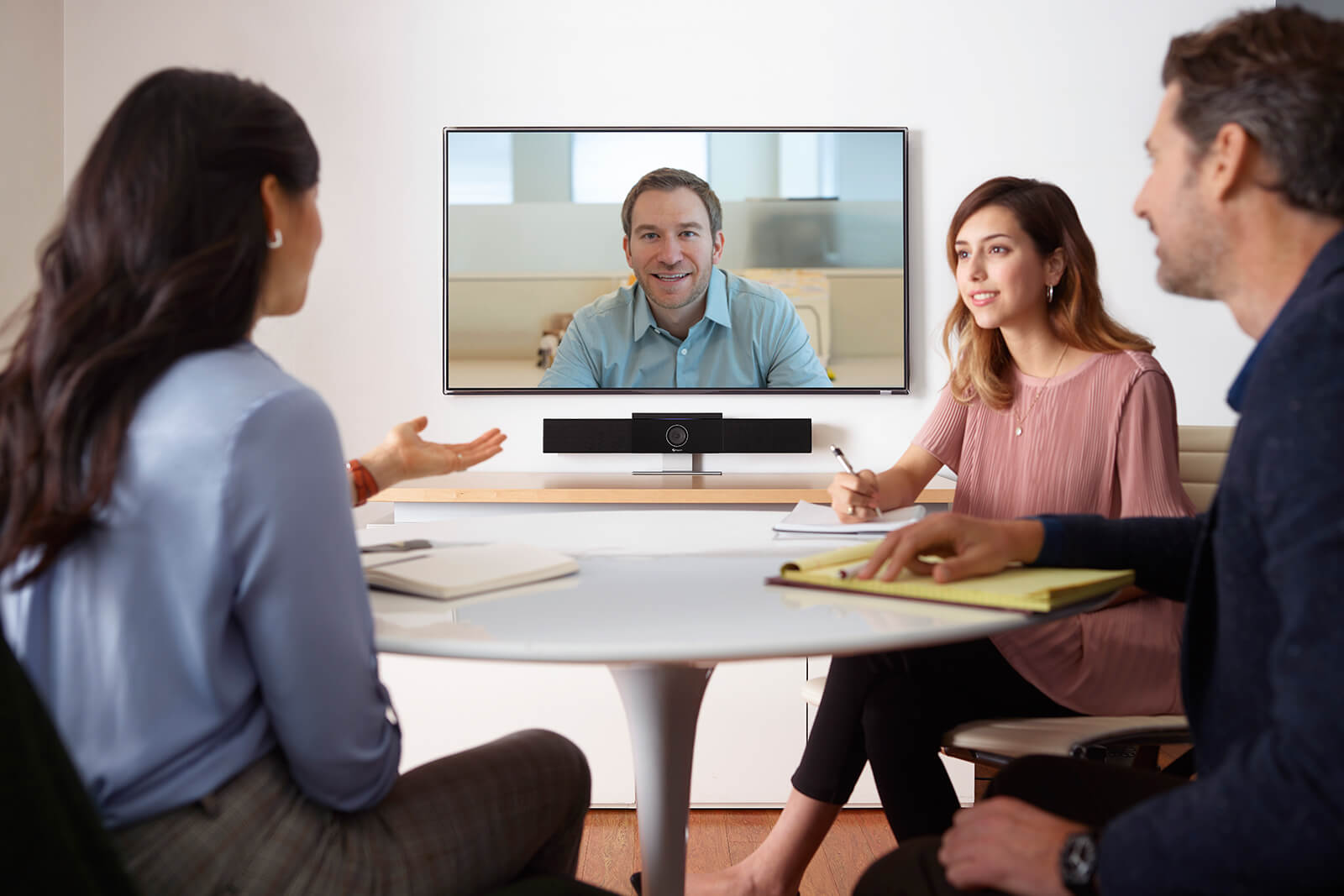In context: If you had to name two things that best exemplify today’s modern office environments, you’d be hard pressed to come up with better choices than huddle rooms and videoconferences. Together, the two reflect both the different types of physical environments that many people now find themselves working in, as well as the different means by which they communicate with co-workers, customers, and other potential business partners.

Huddle rooms, for those who may not know, are the small meeting rooms or mini conference rooms that many companies have adopted—particularly those organizations with open floor plans—to provide small groups of people (typically 2-6) with an easy, space efficient means for holding meetings. Videoconferences are nothing new, of course, but their frequency has increased dramatically over the last few years, thanks to a combination of ubiquitous camera-equipped notebooks and smartphones, higher quality wireless networks, a younger workforce, and more emphasis on collaborative efforts within and across companies.
Another big factor is the wider variety and broader usage of collaboration-focused software tools, ranging from modern chat platforms like Slack and Microsoft’s Teams, to integrated collaboration features in Google’s GSuite, to an enormous range of videoconferencing applications, including Zoom, Blue Jeans, GoToMeeting, Webex, Ring Central, Skype, FaceTime, and much more.
Arguably, huddle rooms and videoconferences are each separately having an important impact on how people work today, but when you put the two together—as organizations have started to do—that’s when you really start to understand how work environments of the late 2010s are very different than they were even earlier in the decade. In recognition of the fact, many companies are starting to set up a number of videoconferencing equipped huddle rooms to drive more collaborative efforts—as well as free employees from the noise-filled cacophony that many open office environments quickly turn into. Not surprisingly, a number of vendors are working to create solutions to address those needs.
"Though they may be small, huddle rooms are proving to be incredibly important resources for employees who want to be more productive in their workplace. Particularly in companies that chose to go with open office layouts (and that are likely regretting the decision now), huddle rooms can provide an oasis of calm that enables the kind of increased collaboration that open offices were supposed to offer."
From PC companies like Lenovo and HP, to more traditional videoconferencing companies like Polycom (now part of a merged company with Plantronics called Poly), there are quite a few interesting new approaches to creating hardware tools that can optimize collaboration and tap into the many software-based videoconferencing tools and services now available. In fact, arguably, one of the key reasons why Plantronics spent $2B to acquire Polycom last year to create Poly is because of the growing importance of video-based collaboration in work environments.
Looking specifically at huddle room-focused video collaboration tools, one of the more intriguing new options coming from the blended company is the Poly Studio, a $949 USB C-equipped soundbar and video camera system that integrates much of the intelligence of higher-end dedicated videoconferencing systems into a huddle room-friendly portable form factor. Anyone using the huddle room can simply plug the device into a USB C-equipped notebook PC and get access to a high-quality 4K-capable audio video system that works automatically with most popular videoconferencing tools—including the aforementioned Teams, Zoom, Blue Jeans, GoToMeeting, and more.
Unlike standalone webcams, the Poly Studio has the ability to automatically track whoever is speaking in a room, both through automatically focusing the camera and directing the microphones to pick up and prioritize the audio coming from the speaker. On top of that, some clever audio processing technology can create what Poly calls an Acoustic Fence that keeps voices outside the room (or walking past) from interrupting the discussion. The NoiseBlock feature will analyze and then automatically mute other sounds that may be coming from within the room or from other call participants. For those who prefer to only use the audio for a given session, there’s a slider available to physically block the lens. A key benefit for IT departments is that Poly Studios can be centrally managed and remotely updated and configured.
Though they may be small, huddle rooms are proving to be incredibly important resources for employees who want to be more productive in their workplace. Particularly in companies that chose to go with open office layouts (and that are likely regretting the decision now), huddle rooms can provide an oasis of calm that enables the kind of increased collaboration that open offices were supposed to offer. At the same time, it’s clear that collaboration of all types, but particularly video-enabled calls, is going to be increasingly important (and common) in businesses of all sizes and varieties. As a result, tools that can bring together real-time collaboration in small rooms are going to play a critical role in increased/improved communication and productivity moving forward.
Bob O’Donnell is the founder and chief analyst of TECHnalysis Research, LLC a technology consulting and market research firm. You can follow him on Twitter @bobodtech. This article was originally published on Tech.pinions.